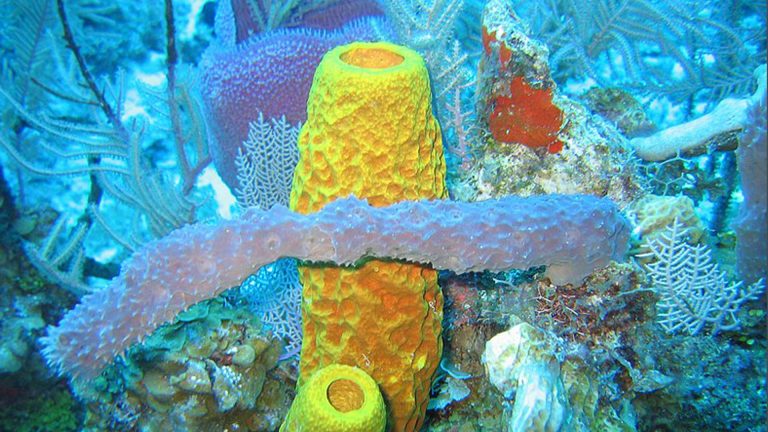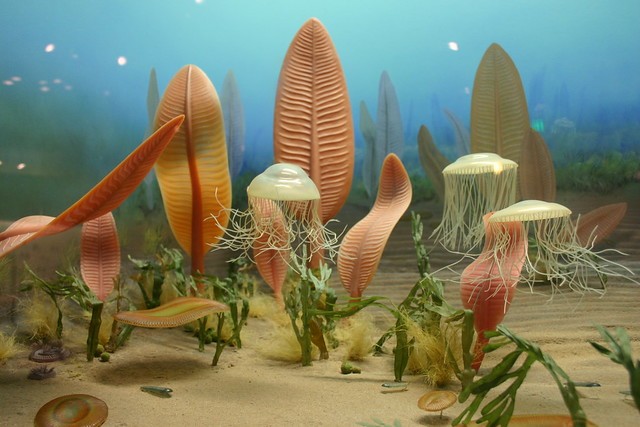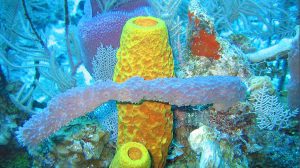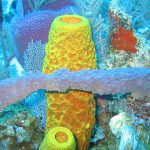
According to the new theory, multicellularity first occurred when cells of the same species group together in a blastula-like colony.
Table of Contents
Multicellular life, purportedly, started around 600 million years ago. From single-celled, certain organisms eventually evolved into the more complex multicellular forms. Several theories arise trying to explain how multi-celled animals came about. As of this time, there remains no consensus as to the origin of animal multicellularity. Recently, another theory emerged and it apparently challenges the widely held notion on the origin of animal multicellularity.
On the origin of animal multicellularity

An imagined Ediacaran biota on the seafloor Credit: Ryan Somma (by Flickr, CC BY-SA 2.0)
In particular, multicellularity is defined as a condition or state of having or being comprised of many cells, each seemingly performing distinct function(s). One of the popular theories held is the “Gastraea Theory of Haeckel“. Accordingly, multicellularity first occurred when cells of the same species group together in a blastula-like colony. In due time, certain cells in the colony underwent cell differentiation.[1] Still, this theory seems inadequate to explain the origin of multicellularity.
What scientists agree on is that, in essence, multicellularity occurred several times in biological history. In Neoproterozoic era, particularly in the Ediacaran period (around 600 million years ago), the first multicellular form emerged. Also in this period, sponge-like organisms evolved based on the recovered fossils of Ediacaran biota. Correspondingly, they were presumed to be the first animals.[2] They resemble the sponges (choanocytes) with size ranging from 1 cm to less than 1m.[3]
The earliest ancestors of multi-celled animals could likely be sponge-like because a sponge has no organs but an assemblage of different cells with specialized functions.
New theory
In contrast to these popular tenets, a new theory on the origin of multicellularity in animals surfaced. Accordingly, scientists at the University of Queensland claim that the present-day multi-celled animals might have evolved from primitive multicellular organisms that were probably not like the modern-day sponges. As a matter of fact, they, too, were surprised at the outcome of their analyses as their findings apparently contradict the widely held notion on animal multicellularity.
According to Professor Bernie Degnan [4], “We’ve found that the first multicellular animals probably weren’t like the modern-day sponge cells, but were more like a collection of convertible cells.”
Moreover, he said: “The great-great-great-grandmother of all cells in the animal kingdom, so to speak, was probably quite similar to a stem cell. This is somewhat intuitive as, compared to plants and fungi, animals have many more cell types, used in very different ways — from neurons to muscles — and cell-flexibility has been critical to animal evolution from the start.”
Accordingly, they based their theory on their comparisons on the transcriptomes, fates, and behaviors of different sponge cell types. Surprisingly, they found out that the transcriptome of sponge choanocytes did not match the transcriptomes of choanoflagellates. Furthermore, the results point towards pluripotency (i.e. the tendency of a cell to develop into more than one cell type).
Also, they found that the choanocytes in the sponge Amphimedon queenslandica could readily transdifferentiate into archaeocytes. The archaocytes, likewise, could differentiate into other cell types.
Concluding remark
Rather than steering towards the anticipated homology of sponge choanocytes and choanoflagellates, their results apparently swerved away from it and took a different direction.
Correspondingly, their analyses indicate that the origin of animal multicellularity might have been a primitive multicellular animal. And as has been noted, these animals could transition between multiple states just as the modern-day stem cells can do.[5]
— written by Maria Victoria Gonzaga
References
1 Biology-Online Editors. (2014, May 12). Living thing. Retrieved from biologyonline.com website: https://www.biologyonline.com/dictionary/living-thing
2 Biology-Online Editors. (2014, May 12). Evolution. Retrieved from biologyonline.com website: https://www.biologyonline.com/dictionary/evolution
3 The History of Animal Evolution. (2000, January 1). Retrieved from https://sci.waikato.ac.nz/evolution/AnimalEvolution.shtml
4 University of Queensland. (2019, June 12). How multi-celled animals developed:
Evolutionary discovery to rewrite textbooks. ScienceDaily. Retrieved June 20, 2019 from https://www.sciencedaily.com/releases/2019/06/190612141436.htm
5 Shunsuke Sogabe, William L. Hatleberg, Kevin M. Kocot, Tahsha E. Say, Daniel Stoupin, Kathrein E. Roper, Selene L.
Fernandez-Valverde, Sandie M. Degnan, Bernard M. Degnan. Pluripotency and the origin of animal multicellularity. Nature, 2019; DOI: https://www.nature.com/articles/s41586-019-1290-4

